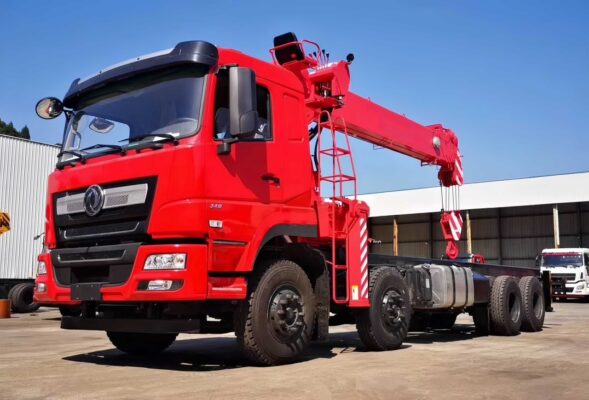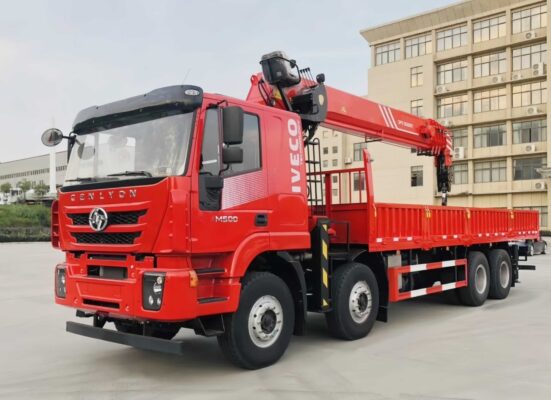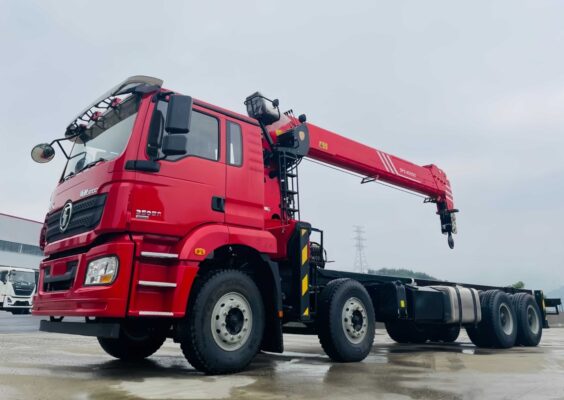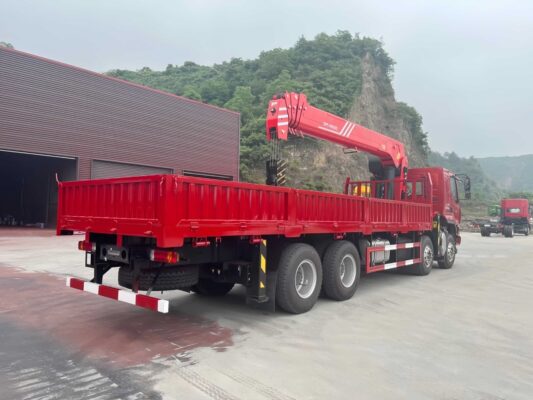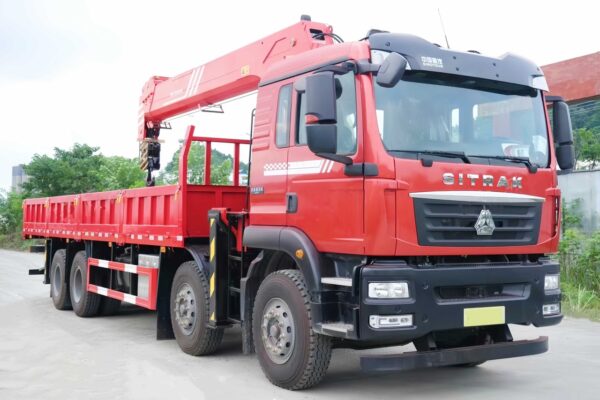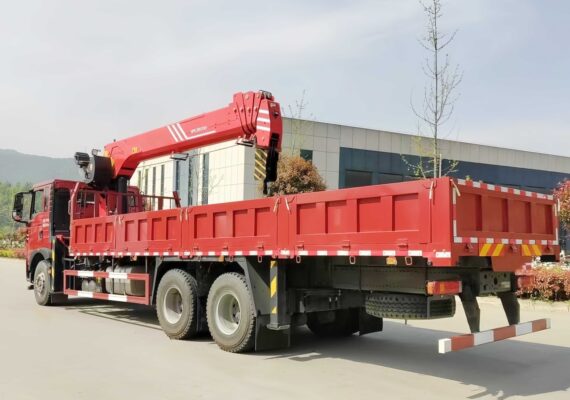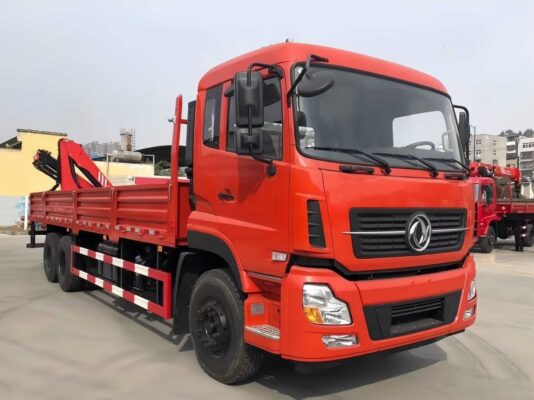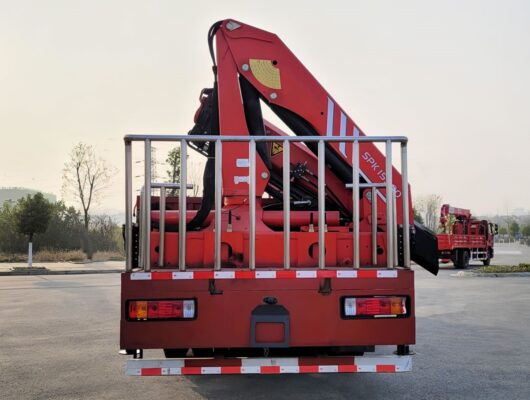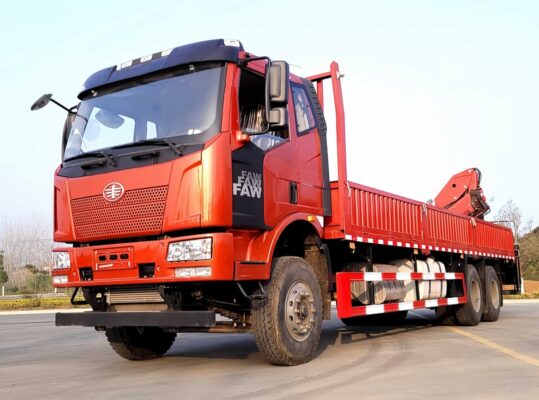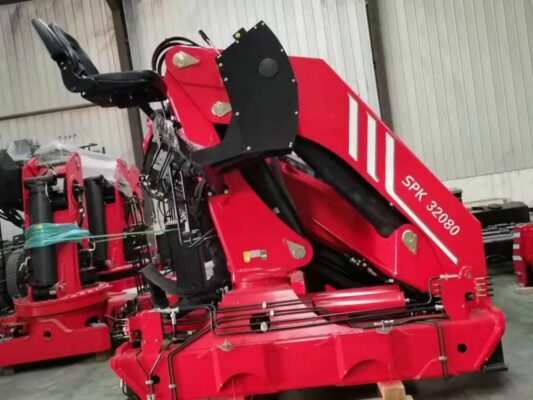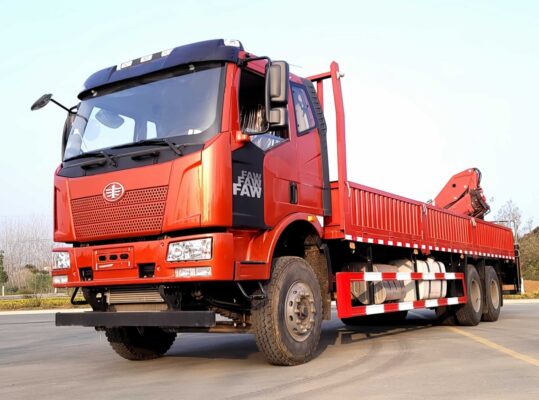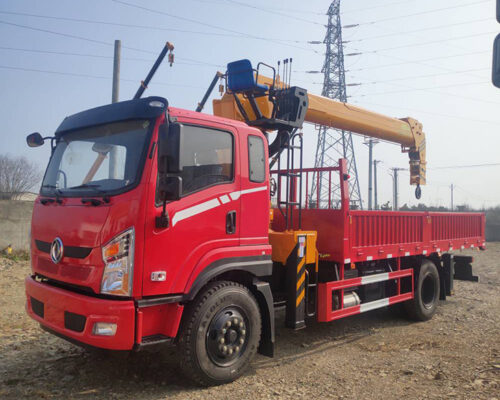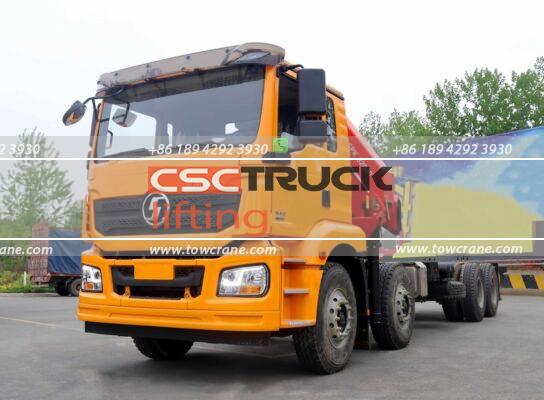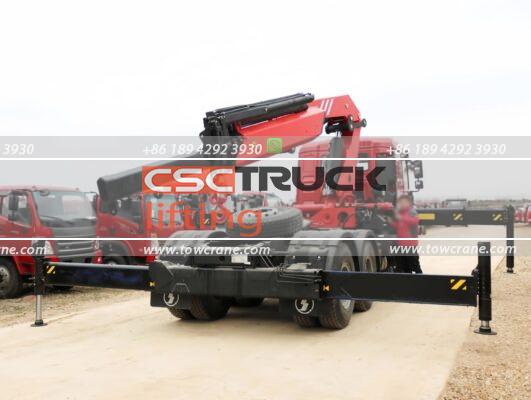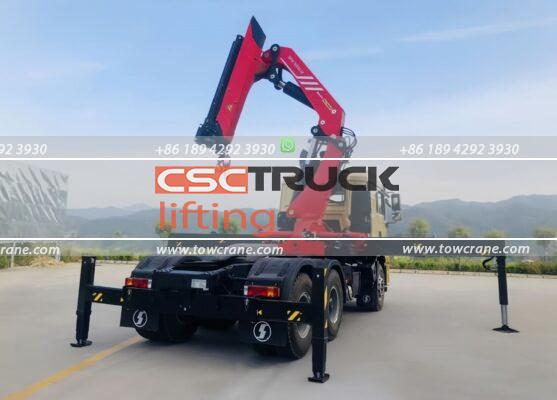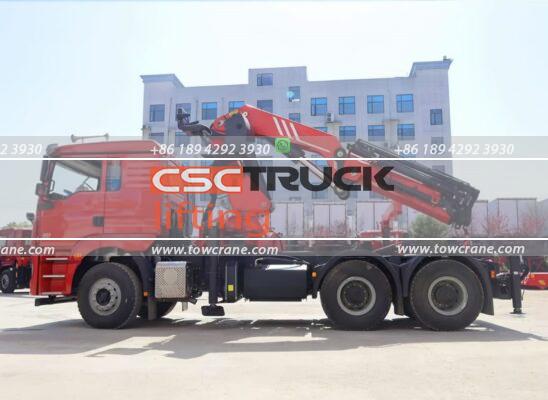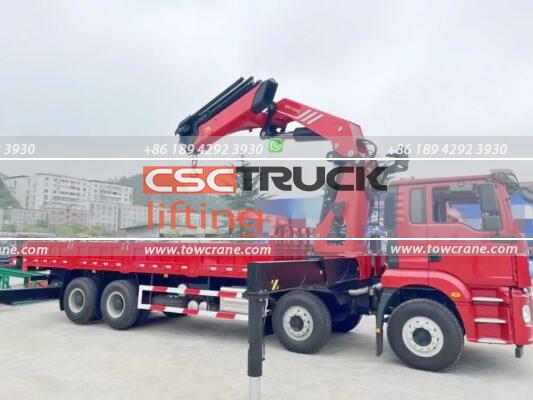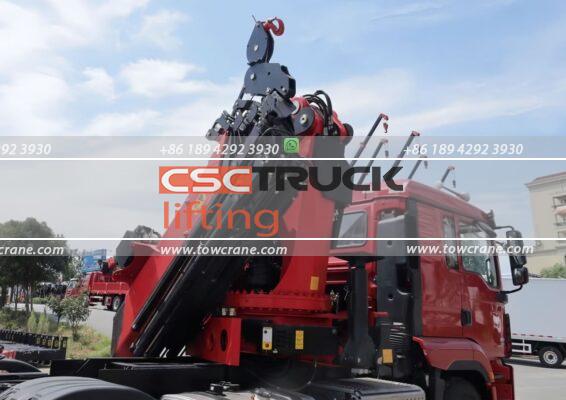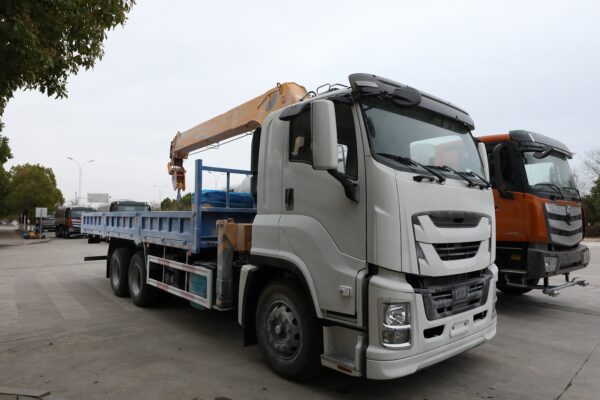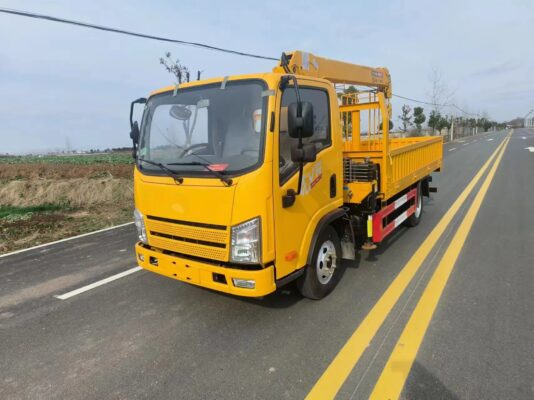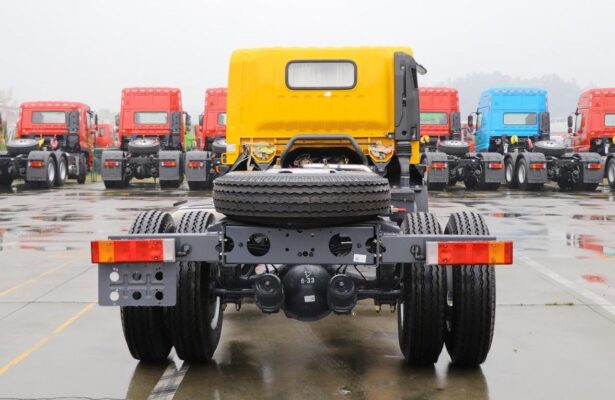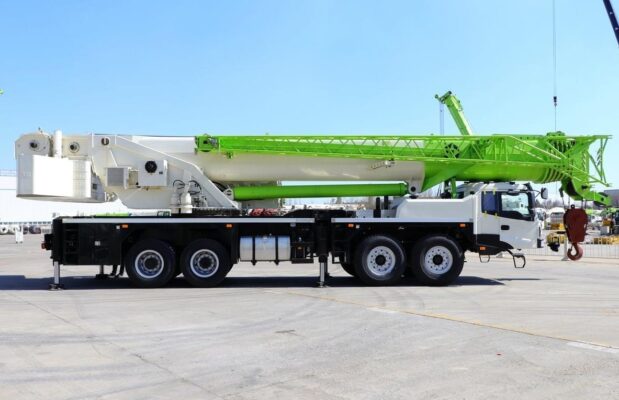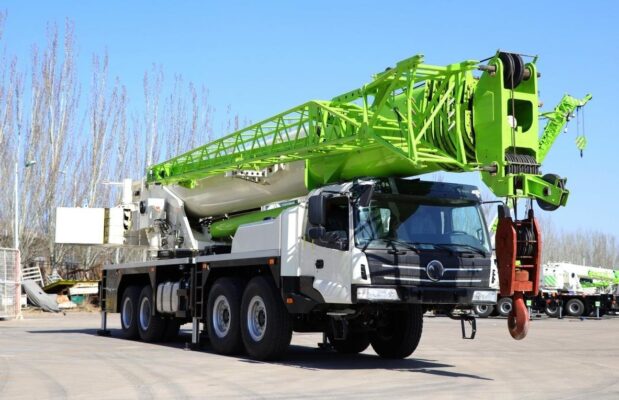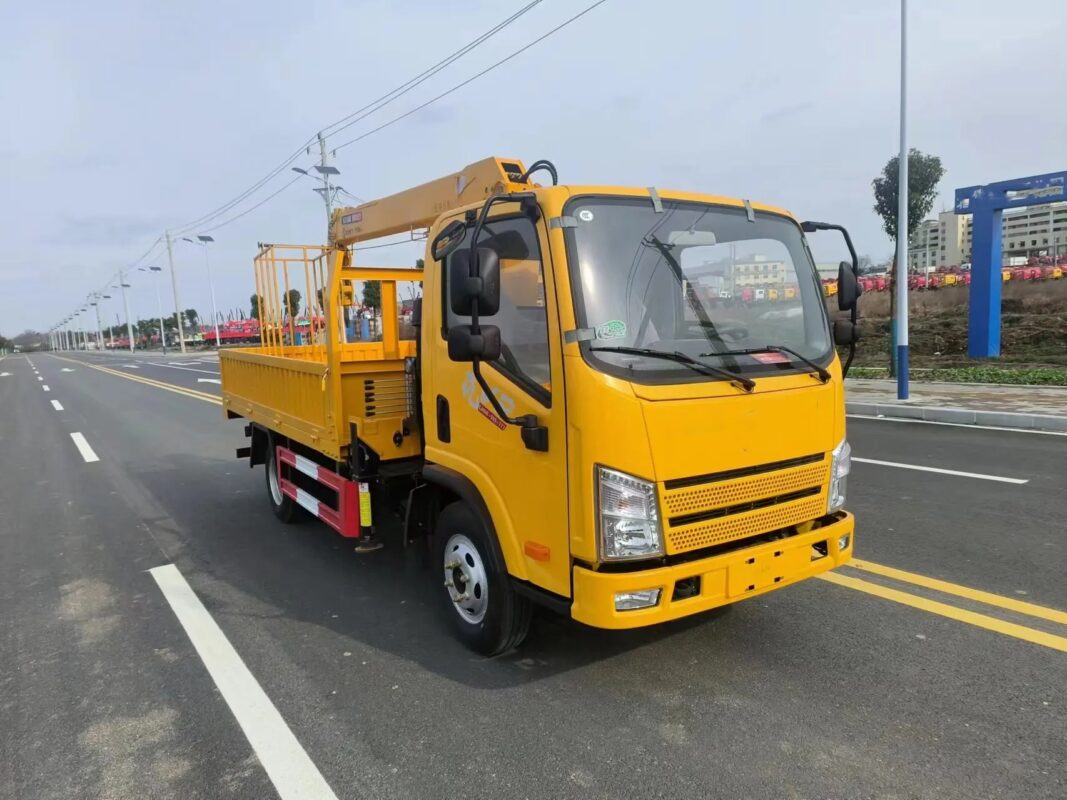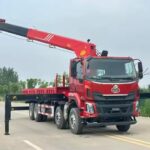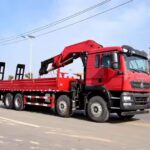Special vehicles, such as
truck-mounted cranes, play a crucial role in various industries. To ensure their optimal performance and longevity, proper maintenance is essential. However, in the process of vehicle maintenance, some users and maintenance personnel often engage in wrong practices that can have a negative impact on the normal use of these special vehicles. In this article, we will explore in detail the ten taboos for special vehicle maintenance as explained by
truck-mounted crane manufacturers.

- Taboo: Adding engine oil without changing it.
Engine oil is of utmost importance in the operation of diesel engines. It serves multiple functions, including lubrication, cooling, and cleaning. Many drivers are diligent in checking the amount of lubricating oil and adding it as per the standard when necessary. However, they often overlook the inspection of the oil’s quality and the need to replace deteriorated oil. This can lead to some moving parts of the engine constantly operating in a poor lubrication environment, which in turn accelerates the wear and tear of various components.
Under normal circumstances, the loss of engine oil in diesel engines is not significant. However, engine oil can easily become contaminated with various impurities, such as soot, carbon deposits, and scale generated by incomplete fuel combustion. For new or overhauled machinery, there are even more impurities after the trial run. If only oil is added without changing it and the machinery is put into use immediately, it can easily result in serious accidents such as burning of bearing bushings and seizure of shafts.

Moreover, even when changing the oil, some drivers, due to a lack of maintenance experience or for the sake of convenience, fail to thoroughly clean the oil passage. As a result, mechanical impurities may still remain in the oil pan and oil circuit, continuing to pose a threat to the engine’s operation.
For example, imagine a
truck-mounted crane that has been in operation for a long time without proper oil changes. The engine oil becomes thick and dirty, losing its lubricating properties. The moving parts of the engine start to grind against each other, causing excessive wear and potentially leading to engine failure. This not only disrupts the crane’s operation but also incurs significant repair costs.

-
-
Taboo: Misusing and randomly applying grease.
Applying grease on the cylinder gasket: Grease is a commonly used lubricating substance in engineering machinery repair and can provide lubrication and sealing. However, some repairmen mistakenly apply a layer of grease on the cylinder gasket when installing it, believing that this will enhance the sealing performance of the diesel engine. In reality, this practice has the opposite effect.
The cylinder gasket is a crucial seal between the cylinder block and cylinder head of a diesel engine. It is responsible for sealing the high-temperature and high-pressure gas generated in the cylinder, as well as the cooling water and lubricating oil in the cylinder head and cylinder block. Therefore, great care must be taken to ensure its sealing quality during disassembly and assembly.

When grease is applied on the cylinder gasket, several problems can occur. As the cylinder head bolts are tightened, part of the grease can be squeezed into the cylinder water passage and oil passage. The grease remaining between the cylinder gaskets can flow into the cylinder for combustion due to the high temperature during engine operation. Additionally, another part of the grease remains on the joint surface between the cylinder block and cylinder head, creating a gap between the cylinder gasket, cylinder head, and engine block plane. High-temperature and high-pressure gas can easily impact the cylinder gasket from this gap, destroying the gasket and causing air leakage. Over time, the grease can also generate carbon deposits in a high-temperature environment, leading to premature aging and deterioration of the cylinder gasket.
For instance, if a truck-mounted crane‘s cylinder gasket is coated with grease, it may initially seem to seal well. However, over time, the grease can cause leaks and reduce the engine’s performance. This can lead to power loss, increased fuel consumption, and potential damage to other engine components.

Applying grease on tire nuts: In an attempt to tighten the nuts easily and prevent rust, many repairmen apply oil on the bolt and nut of the tire. This is a dangerous and incorrect practice. When the tire nut is tightened, the thread has a self-locking characteristic. This is because the helix angle of the thread is smaller than the equivalent friction angle between the threads. In a given bolt connection, the helix angle is a fixed value, while the equivalent friction angle changes depending on the friction state between the threads.

Applying oil to the tire nuts reduces the equivalent friction angle between the threads, thereby deteriorating the self-locking performance of the bolt connection. This can cause the nuts to loosen over time, increasing the risk of tire detachment and potentially leading to serious accidents.
For example, consider a truck-mounted crane on the road. If the tire nuts are lubricated with oil, the vibrations and forces during driving can cause the nuts to gradually loosen. This can result in a tire coming off while the vehicle is in motion, endangering the driver, passengers, and other road users.

-
-
- Taboo: Installing new cylinder liners and pistons without selection.
When replacing cylinder liners and pistons, some people assume that new cylinder liners and pistons are standard parts and are interchangeable, so they can be used simply by installing them. However, this is a misconception. The sizes of cylinder liners and pistons actually have certain tolerance ranges.
For instance, if the cylinder liner with the largest size is matched with the piston with the smallest size, the fit clearance will be too large. This can lead to weak compression and make it difficult for the engine to start. Therefore, when replacing these components, it is essential to check the size grouping code of the standard cylinder liner and piston. The cylinder liner and piston used must have the same size grouping code as the standard piston to ensure a proper fit clearance.

In addition, when installing cylinder liners and pistons with the same grouping code for each cylinder, it is also necessary to pay attention to checking the cylinder-piston clearance before installation. To ensure assembly standards, a test should be conducted before installation to prevent the installation of counterfeit or inferior defective products.
Imagine a truck-mounted crane with mismatched cylinder liners and pistons. The engine may run poorly, consume more fuel, and have reduced power output. In severe cases, it could even lead to engine damage and costly repairs.

-
-
- Taboo: Not checking the plunger stroke allowance.
In the testing of plunger fuel injection pumps, many maintenance personnel neglect to check the plunger stroke allowance. The plunger stroke allowance refers to the amount of movement that the plunger can continue to move upward after being pushed to the top dead center by the cam on the camshaft.

After adjusting the start time of fuel supply, it is crucial to check the stroke allowance because it is related to the wear of the plunger and sleeve. As the plunger and sleeve wear over time, the plunger needs to move up for a longer distance before starting to supply fuel, thus delaying the start time of fuel supply. When the adjustment bolt is unscrewed or replaced with a thicker adjustment pad or gasket, the lowest position of the plunger moves upward, reducing the stroke allowance of the plunger.
Therefore, when repairing and adjusting the fuel injection pump, this stroke allowance should be checked first to determine whether the fuel injection pump still allows adjustment. Different methods should be adopted for inspection depending on the different structures of the fuel injection pump. For example, one method is to rotate the camshaft, push the plunger to the top dead center, then remove the oil outlet valve and valve seat and measure with a depth vernier caliper. Another method is to push the plunger to the top dead center, pry up the spring seat of the plunger spring with a screwdriver to raise the plunger to the highest point, and then measure with a feeler gauge inserted between the lower plane of the plunger and the adjusting bolt of the tappet.

The standard stroke allowance of the plunger is about 1.5mm, and the limit stroke allowance after wear should not be less than 0.5mm.
If the plunger stroke allowance is not checked and adjusted properly, it can lead to improper fuel injection timing, affecting the engine’s performance and fuel economy. For a truck-mounted crane, this can result in reduced lifting capacity and increased fuel consumption.

-
-
- Taboo: Inaccurate measurement of cylinder clearance.
When measuring the cylinder clearance, it is important to measure it in the correct direction. Many people make the mistake of measuring the cylinder clearance in directions other than perpendicular to the piston pin hole at the piston skirt.
The aluminum alloy piston has a structural characteristic of being small at the top and large at the bottom, resembling a cone, and the local cross-section is oval. As a result, the cylinder clearance in the circumferential direction is not equal. The correct measurement should be taken in the direction of the long axis of the ellipse, which is perpendicular to the piston pin hole at the piston skirt. This measurement method is not only more convenient but also more accurate.

Moreover, in reciprocating motion, the direction perpendicular to the piston pin hole at the piston skirt is subject to greater wear due to the action of lateral pressure. Therefore, when measuring the cylinder clearance, it must be measured in this specific direction.
For example, if the cylinder clearance is measured incorrectly, it can lead to an improper fit between the piston and cylinder, resulting in increased friction, reduced engine efficiency, and potential damage to the engine.

-
-
- Taboo: Heating the piston with an open flame.
Since the piston and piston pin are interference fits, when installing the piston pin, some maintenance personnel believe that the piston should be heated to expand first. However, heating the piston directly on an open flame is a very wrong approach.
The piston has uneven thickness in different parts, and the degree of thermal expansion and contraction will vary. Heating with an open flame can cause uneven heating of the piston, easily leading to deformation. Additionally, the piston surface will be covered with carbon ash, reducing the service life of the piston. If the piston is naturally cooled after reaching a certain temperature, its metallographic structure will be damaged, and its wear resistance will be greatly reduced, significantly shortening its service life.

Instead, when installing the piston pin, the piston should be evenly heated in hot oil to make it expand slowly. This method ensures a controlled and uniform expansion, minimizing the risk of damage to the piston.
For a truck-mounted crane, a damaged piston can lead to engine performance issues, increased fuel consumption, and potential breakdowns, affecting the crane’s operation.

-
-
- Taboo: Using emery cloth to polish bearing shells.
For inexperienced repairmen, working on bearing shells can be a challenging task. Due to difficulties in mastering the scraping technology, it can be hard to make bearing shells meet technical requirements. As a result, some people, when replacing bearing shells, use emery cloth to polish instead of scraping in an attempt to increase the contact area between the bearing shell and the crankshaft.

This approach is extremely undesirable in actual maintenance. The abrasive particles on the emery cloth are hard, while the bearing shell alloy is relatively soft. When polishing with emery cloth, the abrasive particles can easily embed in the alloy. When the diesel engine is working, this will accelerate the wear of the journal and shorten the service life of the crankshaft.
For example, if emery cloth is used to polish bearing shells on a truck-mounted crane‘s engine, over time, the embedded abrasive particles can cause significant damage to the crankshaft, leading to increased maintenance costs and downtime.

-
-
- Taboo: Tightening bolts too tightly.
During the disassembly and assembly process of construction machinery, many bolts in various parts have specified torque requirements, such as those in transmission cases, cylinder heads, tires, connecting rods, and front axles. These tightening torques are clearly specified in the instruction manual and must not be changed at will.

However, many users mistakenly believe that tightening bolts tighter will make the connection more secure. In reality, tightening bolts too tightly can cause screws or bolts to break. It can also lead to failures due to thread slippage.
For instance, if the bolts on a truck-mounted crane‘s components are over-tightened, it can cause stress concentrations and potential damage to the parts. This can result in leaks, structural failures, or even accidents.

-
-
- Taboo: Too high tire pressure.
The inflation pressure of tires for wheeled construction machinery is a critical factor that affects its service life and work efficiency. Both too high and too low tire pressure can have negative consequences. It is not conducive to safe driving and can also impact the vehicle’s performance.

In hot summers, special attention should be paid to tire pressure. The scientific inflation standard is to base it on the standard tire pressure and make slight adjustments as the temperature changes. For example, in summer, the tire pressure should be 5%-7% lower than in winter. This is because in summer, the temperature is high, the gas heats up, and the pressure increases. Conversely, in winter, the tire pressure should reach the standard or be slightly lower.
For a truck-mounted crane, incorrect tire pressure can affect its stability, handling, and fuel economy. Overinflated tires can lead to reduced traction, increased risk of punctures, and uneven wear. Underinflated tires can cause excessive wear on the tire sides and reduced fuel efficiency.

-
-
- Taboo: Adding cold water suddenly when the water tank boils.
Overloading of the engine, poor heat dissipation, or lack of water in the water tank can cause the water tank to boil. At this time, adding cold water immediately is a big mistake that can cause serious damage.
Adding cold water suddenly when the water tank is boiling can cause the cylinder head and cylinder block to crack. Therefore, once the water tank is found to be boiling during use, emergency measures should be taken to stop operation and let the cooling water of the diesel engine cool down naturally.

For example, if cold water is added to a boiling water tank of a truck-mounted crane, the sudden temperature change can cause the metal parts to expand and contract rapidly, resulting in cracks and potentially rendering the engine unusable. This not only causes significant repair costs but also disrupts the crane’s operation.
In conclusion, understanding and avoiding these ten taboos for special vehicle maintenance is crucial for ensuring the proper functioning and longevity of truck-mounted cranes and other special vehicles. By following correct maintenance procedures and avoiding these common mistakes, users can maximize the performance and reliability of their vehicles, reducing downtime and maintenance costs.
